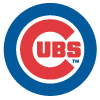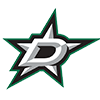Let's begin this week's article with a chess metaphor, in an effort to drive away some readers while leaving the rest of you feeling sophisticated for sticking around.
In chess, the game is usually divided into the opening, middlegame and endgame. The opening involves developing your pieces and getting your king to safety; the endgame typically involves converting a small advantage into a win, sometimes through a checkmating attack but often by promoting a pawn into a queen. The middlegame exists in a nebulously defined space between the two and often involves the pursuit of somewhat abstract goals such as gaining space or creating weaknesses in the opponent's pawn structure. It's hard to say exactly when a given middlegame begins, and games between strong players typically aren't won during this stage, but the small advantages gained during this time are what get turned into winning advantages in the endgame.
A fantasy baseball season can be broken down similarly. The opening is analogous to the draft and the first month or two of the season. During this period, you develop your roster via both the draft and through your early waiver claims, some of whom will (hopefully) wind up among the most important players on your squad by season's end. You also get the chance to see if anyone you drafted came out of the gates looking wildly different, for better or worse. The endgame covers the final few weeks of the season, when you know exactly what categories you need
Let's begin this week's article with a chess metaphor, in an effort to drive away some readers while leaving the rest of you feeling sophisticated for sticking around.
In chess, the game is usually divided into the opening, middlegame and endgame. The opening involves developing your pieces and getting your king to safety; the endgame typically involves converting a small advantage into a win, sometimes through a checkmating attack but often by promoting a pawn into a queen. The middlegame exists in a nebulously defined space between the two and often involves the pursuit of somewhat abstract goals such as gaining space or creating weaknesses in the opponent's pawn structure. It's hard to say exactly when a given middlegame begins, and games between strong players typically aren't won during this stage, but the small advantages gained during this time are what get turned into winning advantages in the endgame.
A fantasy baseball season can be broken down similarly. The opening is analogous to the draft and the first month or two of the season. During this period, you develop your roster via both the draft and through your early waiver claims, some of whom will (hopefully) wind up among the most important players on your squad by season's end. You also get the chance to see if anyone you drafted came out of the gates looking wildly different, for better or worse. The endgame covers the final few weeks of the season, when you know exactly what categories you need to gain ground in and can tailor your weekly pickups and lineups to that end.
The start of the middlegame is nebulous, and just as in chess, its goals are much less specific, but it feels as though we're entering it now. Teams have reached 50 games, pitchers are taking their 11th turns through the rotation, and the plate appearance leaders are well past 200. While roster churn continues all season, and while players still continue to develop after the first two months, we're no longer in the part of the season in which every piece of analysis comes with a sample-size disclaimer.
As we enter the middlegame, it's a great time to step back and assess your squad and its place in the standings. It's important to look not just at where you stand today, but if you've gotten there in sustainable ways. This is the ideal time for big-picture strategic thinking, as we've gotten a meaningful number of at-bats and innings from our players but still have over four months remaining to alter our fate. The goal here is to assess whether your team as a whole is equipped to get where you're trying to go, and that assessment has to be very league-specific.
For example, I have two teams that are sitting in the top three in their respective league despite sitting dead last in steals. One league is not a trading league, and I'm already nine steals back of second-last. Unless I stumble into a speed demon on the wire soon, I'll have to commit to officially punting the category. The other league sees me stuck in an even larger hole, trailing the second-last spot by 12 steals, but that league allows trading. If I make a move soon, I can still close that gap and finish with a couple points in steals, but the later that hypothetical move happens, the less effective it will be.
As with the middlegame in chess, the decisions you make in the middlegame in fantasy baseball aren't always obvious and will rarely decide the fate of the league on their own, but the big-picture strategy calls you make this time of year are what set you up to give yourself the chance of making the final push during the endgame. Perhaps some of those calls will involve one of the following 10 players, whose values look quite different than they did when we were setting up the pieces at the beginning of the year.
RISERS
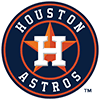 Framber Valdez, SP, Astros: I was pretty much out on Valdez during draft season, wary of any pitcher whose primary skill was keeping the ball on the ground now that teams aren't allowed to set their infield defense optimally. That certainly described Valdez, who combined roughly average strikeout (23.5 percent) and walk (8.1 percent) rates last season with an elite 66.5 percent groundball rate. (Logan Webb finished second among qualified starters with a groundball rate of 56.7 percent, nearly 10 points lower.) While I'm not yet convinced that avoiding groundball specialists was a bad process, that approach ignored the fact that pitchers like Valdez are as aware of the changing rules as we are and can adapt to them. Valdez is still an elite groundball pitcher, but his 61.0 percent mark is merely third-highest among qualified starters. Crucially, it's no longer accurate to call him purely a groundball specialist. His 35:4 K:BB in May means his strikeout rate has jumped to 27.6 percent while his walk rate has fallen to 4.6 percent. That's led to a 2.45 ERA, a mark backed up by his 2.51 xFIP; in other words, ace territory, something not generally reached by grounders alone.
Framber Valdez, SP, Astros: I was pretty much out on Valdez during draft season, wary of any pitcher whose primary skill was keeping the ball on the ground now that teams aren't allowed to set their infield defense optimally. That certainly described Valdez, who combined roughly average strikeout (23.5 percent) and walk (8.1 percent) rates last season with an elite 66.5 percent groundball rate. (Logan Webb finished second among qualified starters with a groundball rate of 56.7 percent, nearly 10 points lower.) While I'm not yet convinced that avoiding groundball specialists was a bad process, that approach ignored the fact that pitchers like Valdez are as aware of the changing rules as we are and can adapt to them. Valdez is still an elite groundball pitcher, but his 61.0 percent mark is merely third-highest among qualified starters. Crucially, it's no longer accurate to call him purely a groundball specialist. His 35:4 K:BB in May means his strikeout rate has jumped to 27.6 percent while his walk rate has fallen to 4.6 percent. That's led to a 2.45 ERA, a mark backed up by his 2.51 xFIP; in other words, ace territory, something not generally reached by grounders alone.
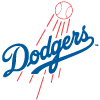 Will Smith, C, Dodgers: After more or less sitting out the offseason, the Dodgers have gone on to show exactly why they didn't feel the need to add major pieces over the winter, as they lead the National League with a 31-19 record over their first 50 games. Some of that is thanks to the emergence of players like James Outman, but a lot can be attributed to some typically excellent performances from the Dodgers' deep stable of stars. Smith has a case as the best of the bunch so far this season, as his 159 wRC+ edges out Freddie Freeman for the team lead. After carrying a .261/.356/.501 line into this season, the fifth-year backstop is now hitting .310/.406/.552. That slash line shows across-the-board improvement, though all of those gains seemingly trace back to the same thing: a big drop in strikeout rate. That's not to say that Smith had strikeout problems in the past, as his 16.6 percent strikeout rate last year was quite strong, but he's cut it all the way down to a remarkable 8.4 percent this season. He's not getting there by being overly aggressive, as he also has a career-best 14.7 percent walk rate, and he's still hitting the ball as hard as ever.
Will Smith, C, Dodgers: After more or less sitting out the offseason, the Dodgers have gone on to show exactly why they didn't feel the need to add major pieces over the winter, as they lead the National League with a 31-19 record over their first 50 games. Some of that is thanks to the emergence of players like James Outman, but a lot can be attributed to some typically excellent performances from the Dodgers' deep stable of stars. Smith has a case as the best of the bunch so far this season, as his 159 wRC+ edges out Freddie Freeman for the team lead. After carrying a .261/.356/.501 line into this season, the fifth-year backstop is now hitting .310/.406/.552. That slash line shows across-the-board improvement, though all of those gains seemingly trace back to the same thing: a big drop in strikeout rate. That's not to say that Smith had strikeout problems in the past, as his 16.6 percent strikeout rate last year was quite strong, but he's cut it all the way down to a remarkable 8.4 percent this season. He's not getting there by being overly aggressive, as he also has a career-best 14.7 percent walk rate, and he's still hitting the ball as hard as ever.
 Zach Eflin, SP, Rays: Eflin has always had strong control, never finishing with a walk rate above 6.8 percent and producing an excellent 4.1 percent mark over the last two seasons. That's always been combined with mediocre strikeout numbers, a merely average groundball rate and a tough home park in Philadelphia, however, leading to a 4.49 ERA across seven seasons as a Phillie. One way to rapidly become a more interesting pitcher is to let the Rays get their hands on you, though, and Eflin did just that by signing a three-year deal in December. Aside from a minimum-length stay on the injured list due to back tightness early in the season, the results have been quite promising, as he owns a 3.45 ERA and 1.00 WHIP through eight starts. The picture only gets more appealing when you dig a little deeper, as Eflin's 3.02 xFIP and 3.01 SIERA suggest things could have gone even better. Eflin has walked even fewer batters (2.7 percent) while increasing his strikeout rate to 28.4 percent. The whiffs have been especially prevalent lately, as he's struck out eight or more batters in three of his four May starts. He's also added a career-high 49.2 percent groundball rate for good measure.
Zach Eflin, SP, Rays: Eflin has always had strong control, never finishing with a walk rate above 6.8 percent and producing an excellent 4.1 percent mark over the last two seasons. That's always been combined with mediocre strikeout numbers, a merely average groundball rate and a tough home park in Philadelphia, however, leading to a 4.49 ERA across seven seasons as a Phillie. One way to rapidly become a more interesting pitcher is to let the Rays get their hands on you, though, and Eflin did just that by signing a three-year deal in December. Aside from a minimum-length stay on the injured list due to back tightness early in the season, the results have been quite promising, as he owns a 3.45 ERA and 1.00 WHIP through eight starts. The picture only gets more appealing when you dig a little deeper, as Eflin's 3.02 xFIP and 3.01 SIERA suggest things could have gone even better. Eflin has walked even fewer batters (2.7 percent) while increasing his strikeout rate to 28.4 percent. The whiffs have been especially prevalent lately, as he's struck out eight or more batters in three of his four May starts. He's also added a career-high 49.2 percent groundball rate for good measure.
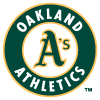 Esteury Ruiz, OF, Athletics: There were no doubts about Ruiz's speed during draft season, but whether he'd hit enough to be a big-league regular was unclear. The December trade that sent him to Oakland was a clear positive for his potential playing time, as he wouldn't have to beat out the caliber of teammate he had in Milwaukee or San Diego, but it also meant that two organizations had decided to move on from him in a span of six months, which is seldom a good sign. Ruiz's .255/.336/.302 slash line through the end of April was probably good enough to keep his job given the strength of Oakland's alternatives, but his .319/.354/.462 line in May is much more encouraging. There are still some clear negatives to his game at the plate — he's walked just 3.7 percent of the time and has a 22.8 percent hard-hit rate, sixth worst among qualified hitters — but all he really needs to do for fantasy purposes is hit well enough to earn the opportunity to show off his speed, and he's easily cleared that bar. That speed has been exactly as advertised, as his 25 steals beat everyone else by at least five and beat everyone not named Ronald Acuna by at least 11.
Esteury Ruiz, OF, Athletics: There were no doubts about Ruiz's speed during draft season, but whether he'd hit enough to be a big-league regular was unclear. The December trade that sent him to Oakland was a clear positive for his potential playing time, as he wouldn't have to beat out the caliber of teammate he had in Milwaukee or San Diego, but it also meant that two organizations had decided to move on from him in a span of six months, which is seldom a good sign. Ruiz's .255/.336/.302 slash line through the end of April was probably good enough to keep his job given the strength of Oakland's alternatives, but his .319/.354/.462 line in May is much more encouraging. There are still some clear negatives to his game at the plate — he's walked just 3.7 percent of the time and has a 22.8 percent hard-hit rate, sixth worst among qualified hitters — but all he really needs to do for fantasy purposes is hit well enough to earn the opportunity to show off his speed, and he's easily cleared that bar. That speed has been exactly as advertised, as his 25 steals beat everyone else by at least five and beat everyone not named Ronald Acuna by at least 11.
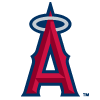 Mickey Moniak, OF, Angels: We'll get the caveats out of the way first: Moniak has appeared in just 10 MLB games this season and is striking out 34.4 percent of the time. But if I gave Christopher Morel his due last week despite a similar flaw, why not give a nod to Moniak and his .419/.438/.935 slash line? And sure, you can point to his strikeout rate and his .563 BABIP as proof that his line is massively overinflated, and you'll get zero pushback here. But given where he is at this point in his career, the 2016 first-overall pick doesn't need to do anything special to count as a riser. Despite his former prospect pedigree, he'd received just 167 major-league plate appearances prior to this season, and his .157/.218/.268 line (32 wRC+) and 39.5 percent strikeout rate make it easy to see why his opportunities remained limited. The Angels picked him up at last year's deadline for two months of whatever is left of Noah Syndergaard but didn't think highly enough of him to include him on the Opening Day roster. He got his chance after posting a 118 wRC+ in 33 Triple-A games, with the Angels wanting an alternative to the struggling Taylor Ward. Moniak won't keep hitting like this, but his early outburst has already seemingly made him the Angels' primary left fielder and could keep him from losing the job at the first sign of a slump.
Mickey Moniak, OF, Angels: We'll get the caveats out of the way first: Moniak has appeared in just 10 MLB games this season and is striking out 34.4 percent of the time. But if I gave Christopher Morel his due last week despite a similar flaw, why not give a nod to Moniak and his .419/.438/.935 slash line? And sure, you can point to his strikeout rate and his .563 BABIP as proof that his line is massively overinflated, and you'll get zero pushback here. But given where he is at this point in his career, the 2016 first-overall pick doesn't need to do anything special to count as a riser. Despite his former prospect pedigree, he'd received just 167 major-league plate appearances prior to this season, and his .157/.218/.268 line (32 wRC+) and 39.5 percent strikeout rate make it easy to see why his opportunities remained limited. The Angels picked him up at last year's deadline for two months of whatever is left of Noah Syndergaard but didn't think highly enough of him to include him on the Opening Day roster. He got his chance after posting a 118 wRC+ in 33 Triple-A games, with the Angels wanting an alternative to the struggling Taylor Ward. Moniak won't keep hitting like this, but his early outburst has already seemingly made him the Angels' primary left fielder and could keep him from losing the job at the first sign of a slump.
FALLERS
 Trea Turner, SS, Phillies: Those who subscribe to the theory that you should avoid players in their first year of a big free-agent deal are looking pretty smart right about now. Turner signed an 11-year, $300 million deal with the defending National League champions in December, but his first two months in red pinstripes haven't gone as planned. He hasn't been abjectly awful, but his .251/.297/.382 slash line is a far cry from the .302/.355/.487 line he produced in his first eight seasons. He's seen slight drops in his hard-hit rate and barrel rate, but the biggest worry is the strikeout problem he's suddenly developed. He struck out 18.0 percent of the time prior to this season but owns a 26.9 percent strikeout rate this year, explaining the big drop in batting average. Turner has shown the textbook sign of pressing and trying to do too much to earn the respect of his new organization, as he's chased 41.8 percent of pitches outside the zone, more than 10 points above his career average (31.2 percent) as well as the overall MLB average (31.5 percent). He needs to reset and get back to his old approach, which should in turn give him far more chances to run. He's only swiped six bags this year, but that seems more to do with opportunity than ability, as he still has 99th percentile sprint speed.
Trea Turner, SS, Phillies: Those who subscribe to the theory that you should avoid players in their first year of a big free-agent deal are looking pretty smart right about now. Turner signed an 11-year, $300 million deal with the defending National League champions in December, but his first two months in red pinstripes haven't gone as planned. He hasn't been abjectly awful, but his .251/.297/.382 slash line is a far cry from the .302/.355/.487 line he produced in his first eight seasons. He's seen slight drops in his hard-hit rate and barrel rate, but the biggest worry is the strikeout problem he's suddenly developed. He struck out 18.0 percent of the time prior to this season but owns a 26.9 percent strikeout rate this year, explaining the big drop in batting average. Turner has shown the textbook sign of pressing and trying to do too much to earn the respect of his new organization, as he's chased 41.8 percent of pitches outside the zone, more than 10 points above his career average (31.2 percent) as well as the overall MLB average (31.5 percent). He needs to reset and get back to his old approach, which should in turn give him far more chances to run. He's only swiped six bags this year, but that seems more to do with opportunity than ability, as he still has 99th percentile sprint speed.
 Xander Bogaerts, SS, Padres: Many (myself included) were low on Bogaerts heading into the season, as he'd seen his power dip to 15 homers last year and was leaving the Green Monster and its big batting-average boost for a much tougher park in San Diego. Through the end of April, those worries seemed unfounded, as Bogaerts homered six times while slashing .308/.400/.514 (good for a 155 wRC+). In May, however, those worries have come rushing back. He's cleared the fence just once and has managed a 66 wRC+, the product of a .188/.291/.275 slash line. A jump in strikeout rate from 14.4 percent to 20.3 percent is part of the problem, though that latter mark is still better than league average. He's also stopped pulling the ball, with his pull rate dropping from 38.9 percent to 26.4 percent. It's probably wrong to get too worked up about Bogaerts' bad month in isolation, but it's equally wrong to ignore it. In two of the last three seasons, Bogaerts hit above .300 while posting an xBA below .260, something that looks clearly Monster-related. A hot April hid the fact that he can't be considered a reliable source of elite average now that he's in San Diego.
Xander Bogaerts, SS, Padres: Many (myself included) were low on Bogaerts heading into the season, as he'd seen his power dip to 15 homers last year and was leaving the Green Monster and its big batting-average boost for a much tougher park in San Diego. Through the end of April, those worries seemed unfounded, as Bogaerts homered six times while slashing .308/.400/.514 (good for a 155 wRC+). In May, however, those worries have come rushing back. He's cleared the fence just once and has managed a 66 wRC+, the product of a .188/.291/.275 slash line. A jump in strikeout rate from 14.4 percent to 20.3 percent is part of the problem, though that latter mark is still better than league average. He's also stopped pulling the ball, with his pull rate dropping from 38.9 percent to 26.4 percent. It's probably wrong to get too worked up about Bogaerts' bad month in isolation, but it's equally wrong to ignore it. In two of the last three seasons, Bogaerts hit above .300 while posting an xBA below .260, something that looks clearly Monster-related. A hot April hid the fact that he can't be considered a reliable source of elite average now that he's in San Diego.
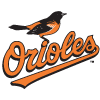 Jorge Mateo, SS, Orioles: The book on Mateo heading into the season was that he had excellent speed (35 steals in 2022) and played good defense at shortstop but had enough questions about his bat that there was real concern he wouldn't be able to hold off Baltimore's other young shortstop options and keep his job. Through the end of April, Mateo was doing an excellent job staving off concerns about his bat and seemed to be developing into a potential weapon at the plate, not merely someone who hit well enough to keep playing. Since the calendar flipped to May, however, the drop-off has been dramatic:
Jorge Mateo, SS, Orioles: The book on Mateo heading into the season was that he had excellent speed (35 steals in 2022) and played good defense at shortstop but had enough questions about his bat that there was real concern he wouldn't be able to hold off Baltimore's other young shortstop options and keep his job. Through the end of April, Mateo was doing an excellent job staving off concerns about his bat and seemed to be developing into a potential weapon at the plate, not merely someone who hit well enough to keep playing. Since the calendar flipped to May, however, the drop-off has been dramatic:
| Month | PA | AVG | OBP | SLG | BB% | K% | HR/600 PA | SB/600 PA | Hard Hit % |
|---|---|---|---|---|---|---|---|---|---|
| March/April | 83 | .347 | .395 | .667 | 7.2% | 14.5% | 43.4 | 72.3 | 46.9% |
| May | 60 | .107 | .136 | .125 | 3.3% | 30.0% | 0.0 | 40.0 | 27.5% |
The whole picture is ugly, but it might be the return of Mateo's all too familiar awful plate discipline that's the most concerning. The shortstop's 4.8 percent walk rate and 27.7 percent strikeout rate for his career heading into this season made for a terrible combination, so the fact that he seemed to be demonstrating growth in April seemed encouraging. He's now back to his old ways, and the playing-time concerns are reappearing, with Joey Ortiz starting at shortstop in three of the last nine games.
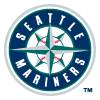 Kolten Wong, 2B, Mariners: It's unlikely that anyone who drafted Wong this year expected anything close to stardom, but they surely expected a lot more than this. In his two seasons in Milwaukee, Wong hit .262/.337/.439 with an average of 14.5 homers and 14.5 steals, good enough for him to finish as the 22nd- and 13th-best second baseman in roto leagues despite missing time due to injury in both seasons. A move to Seattle over the winter brought with a drop in park factors, but a tougher park can't account on its own for his awful .172/.252/.202 slash line nor his grand total of zero homers and zero steals. Wong is making less contact, with his 19.8 percent strikeout rate beating league average but significantly trailing his career 15.8 percent mark, and his contact has been very weak, as his 24.4 percent hard-hit rate sits in the fifth percentile. The Mariners elected not to wait for him to turn things around, instead dropping him into a pure bench role, with Jose Caballero (a 26-year-old without much prospect pedigree) taking over at the keystone.
Kolten Wong, 2B, Mariners: It's unlikely that anyone who drafted Wong this year expected anything close to stardom, but they surely expected a lot more than this. In his two seasons in Milwaukee, Wong hit .262/.337/.439 with an average of 14.5 homers and 14.5 steals, good enough for him to finish as the 22nd- and 13th-best second baseman in roto leagues despite missing time due to injury in both seasons. A move to Seattle over the winter brought with a drop in park factors, but a tougher park can't account on its own for his awful .172/.252/.202 slash line nor his grand total of zero homers and zero steals. Wong is making less contact, with his 19.8 percent strikeout rate beating league average but significantly trailing his career 15.8 percent mark, and his contact has been very weak, as his 24.4 percent hard-hit rate sits in the fifth percentile. The Mariners elected not to wait for him to turn things around, instead dropping him into a pure bench role, with Jose Caballero (a 26-year-old without much prospect pedigree) taking over at the keystone.
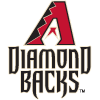 Alek Thomas, OF, Diamondbacks: Led by a wave of young talent, including an exciting trio of speedy outfielders, the Diamondbacks were an interesting sleeper team over the winter, though they had enough holes that 2024 seemed like a more accurate estimate of their arrival. If I told you before the season that they'd have a 29-20 record through their first 49 games, you'd probably assume that the young set of outfielders was leading the way. Instead, Jake McCarthy was demoted in late April, and Thomas followed him last week. Thomas just turned 23 less than a month ago, so it's far too early to conclude that he won't live up to his prospect pedigree, but the gap between the player he's been through 152 big-league games and the player he needs to be if he's to establish himself as a regular is wide. In roughly a full season at the highest level, he's hit .223/.270/.340 with 10 homers and seven steals. His line slipped to .195/.252/.327 this season, with a four-point jump in his strikeout rate (to 22.0 percent) the main culprit. Thomas' glove should make it easier for him to return to the majors, but his development into a real fantasy asset seems to be a year or two away.
Alek Thomas, OF, Diamondbacks: Led by a wave of young talent, including an exciting trio of speedy outfielders, the Diamondbacks were an interesting sleeper team over the winter, though they had enough holes that 2024 seemed like a more accurate estimate of their arrival. If I told you before the season that they'd have a 29-20 record through their first 49 games, you'd probably assume that the young set of outfielders was leading the way. Instead, Jake McCarthy was demoted in late April, and Thomas followed him last week. Thomas just turned 23 less than a month ago, so it's far too early to conclude that he won't live up to his prospect pedigree, but the gap between the player he's been through 152 big-league games and the player he needs to be if he's to establish himself as a regular is wide. In roughly a full season at the highest level, he's hit .223/.270/.340 with 10 homers and seven steals. His line slipped to .195/.252/.327 this season, with a four-point jump in his strikeout rate (to 22.0 percent) the main culprit. Thomas' glove should make it easier for him to return to the majors, but his development into a real fantasy asset seems to be a year or two away.











